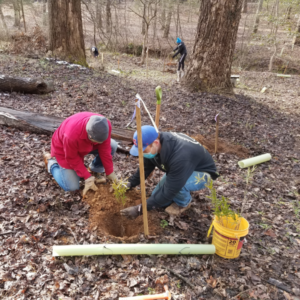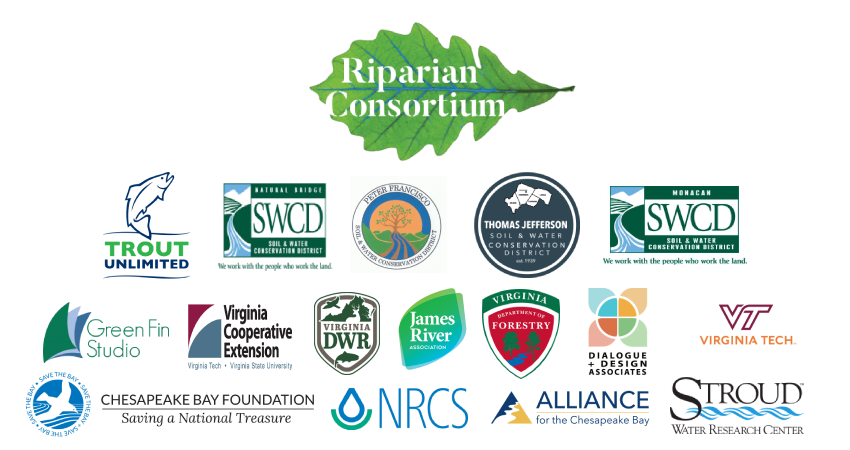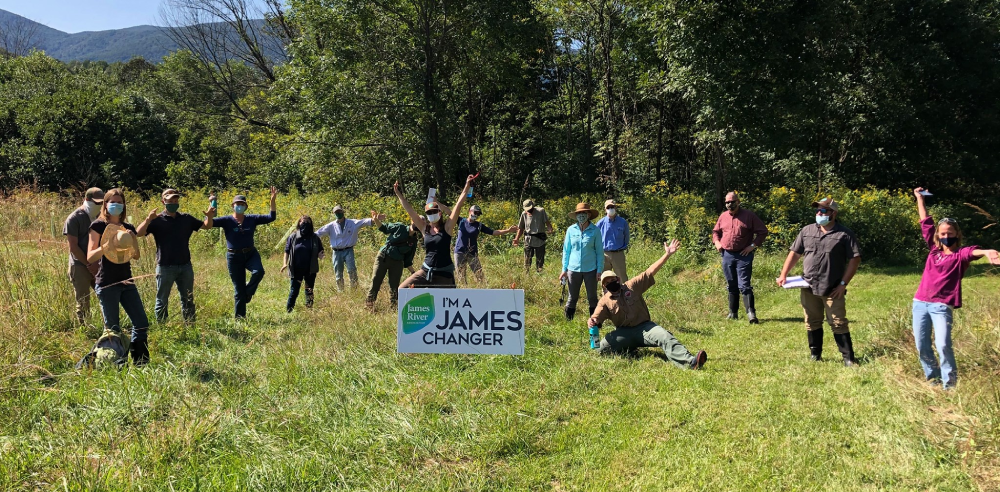The James River Association Celebrates a $1 Million Grant!
The James River Association (JRA), on behalf of the Upper and Middle James Riparian Consortium (Consortium), is excited to share that our $1 million proposal to the National Fish and Wildlife Foundation was accepted!
Restoring forests along the James River and its tributaries is one of the most important things we can do to improve water quality, support wildlife habitat, and give communities and families spaces to connect to nature. Partnerships and collaboration are at the heart JRA’s Watershed Restoration work and the James River is lucky to have so many passionate and dedicated partners, from non-profits, state and local governments, land trusts, and private sector, working to restore and protect our riparian buffers.
 In 2019, the James River Association (JRA) convened partners to form the Upper and Middle James Riparian Consortium with a vision of “Growing partnerships to create healthy streamside ecosystems for clean water in the James River today and tomorrow.” Since its start, the Consortium has a lot to be proud of! We’ve created a more connected network of partners across the region that are collaborating on projects, we are building capacity of partners through a pilot buffers certificate program through the Chesapeake Bay Landscape Professionals, we are collectively raising awareness of riparian buffers through outreach events like an upcoming field day at VT’s Catawba Sustainability Center on June 26, and we launched the James River Buffer Program, where we’ve installed over 250 acres of riparian forest buffers since 2019 thanks to the Virginia Environmental Endowment.
In 2019, the James River Association (JRA) convened partners to form the Upper and Middle James Riparian Consortium with a vision of “Growing partnerships to create healthy streamside ecosystems for clean water in the James River today and tomorrow.” Since its start, the Consortium has a lot to be proud of! We’ve created a more connected network of partners across the region that are collaborating on projects, we are building capacity of partners through a pilot buffers certificate program through the Chesapeake Bay Landscape Professionals, we are collectively raising awareness of riparian buffers through outreach events like an upcoming field day at VT’s Catawba Sustainability Center on June 26, and we launched the James River Buffer Program, where we’ve installed over 250 acres of riparian forest buffers since 2019 thanks to the Virginia Environmental Endowment.
Over the next few years, thanks to this new grant, we are excited to build on our successes through the following goals: 1) build a resilient collaborative model to sustain the Consortium, 2) accelerate buffer implementation by continuing to offer the James River Buffer Program, building more green workforce capacity through a strengthened CBLP-Buffer Certificate program, and start a new James River Stewardship program to care for existing buffers, and 3) increase our local competency in streambank erosion solutions through listening to current barriers and challenges of our partners, integrating opportunities for learning, and implementing a streambank stabilization project.
We want to give a special shoutout to all of our amazing steering committee members!
- Amber Ellis, James River Association
- Charlie Simmons, Natural Resources Conservation Services
- Deya Ramsden, Department of Forestry
- Jenny McGarvey, Alliance for the Chesapeake Bay
- Joey Shelton, James River Association
- John Munsell, Virginia Tech
- Keith Burgess, Monacan Soil and Water Conservation District
- Kelly Snoddy, Peter Francisco Soil and Water Conservation District
- Lee Cummings, Natural Bridge Soil and Water Conservation District
- Luke Longanecker, Thomas Jefferson Soil and Water Conservation District
- Louise Finger, Department of Wildlife Resources
- Matt Ehrhart, Stroud Water Research Center
- Sammy Vest, Trout Unlimited
- Sarah Coffey, Chesapeake Bay Foundation
- Paula and Dave Jasinski, GreenFin Studio
- Christine Gyovai and Sierra Gladfelter, Dialogue + Design Associates, facilitators

We also want to congratulate other National Fish and Wildlife grantees across the Chesapeake Bay watershed. To see a slate of grantees, visit this link.
This initiative is being funded by the National Fish and Wildlife Foundation. The views and conclusions contained in this document are those of the authors and should not be interpreted as presenting the opinions or policies of the U.S. Government of the National Fish and Wildlife Foundation and its funding sources. Mention of trade names or commercial products does not constitute their endorsement by the U.S. Government or the National Fish and Wildlife Foundation or its funding sources.

